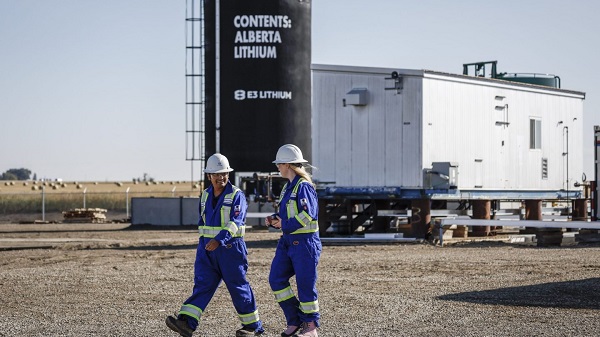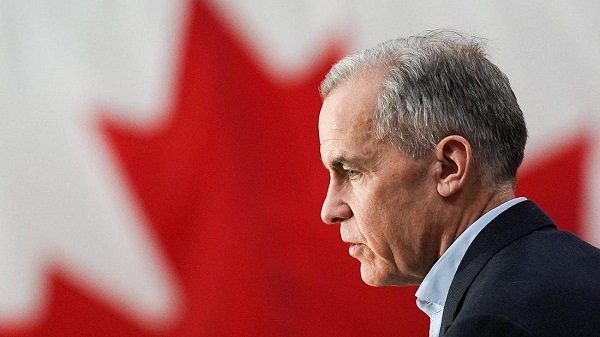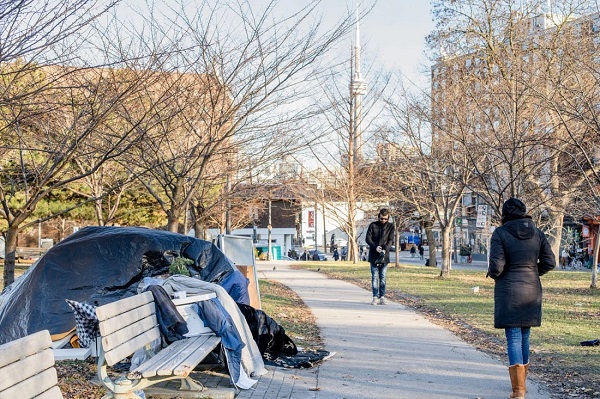Crime
Civil Forfeiture Case Reveals B.C. Fentanyl Network Tied to Chinese Precursor Shift

Drug lab at Seux Road near Mission, BC
Seizures included significant amounts of 4-Piperidone — a key upstream fentanyl precursor that Chinese suppliers adopted after U.S. restrictions on NPP and ANPP
A new civil forfeiture case in British Columbia has surfaced extraordinary details about a clandestine fentanyl production network that investigators say operated with academic-level expertise, imported laboratory equipment from overseas, and, significantly, relied predominantly on 4-Piperidone, a precursor chemical that Chinese suppliers moved to after the U.S. government cracked down on previous analogs.
The Bureau’s analysis of the filing and information from expert sources suggests the network is consistent with the hybrid model now driving the global fentanyl trade: Chinese Communist Party–linked chemical suppliers, Mexican cartel distributors, and Iranian transnational networks partnering with Canadian gangs, notably the Wolfpack Alliance, to embed industrial-scale production inside British Columbia.
In a case first reported by the Vancouver Sun, filed August 13 in B.C. Supreme Court, the Director of Civil Forfeiture seeks to seize three properties in Langley and Aldergrove, three vehicles, and $1,860 in cash linked to the alleged operation.
The filing names Cesar Douglas Escobar-Calderon, Harpal Singh Gill, Michaela Marie Butler Christensen also known as Michaela Marie Gill, and One Oak Construction Ltd. as defendants. Investigators allege Gill purchased large volumes of fentanyl precursors under a fictitious company name, and ordered professional laboratory equipment from overseas to outfit clandestine labs. Equipment and chemicals were distributed through a network of suburban properties, including Pitt Meadows, Mission, Aldergrove, and Langley.
While the filing does not name the overseas jurisdiction where Gill allegedly sourced high-grade laboratory equipment and fentanyl precursors, prior U.S. sanctions cases focused on British Columbia indicate China is almost certainly the origin, consistent with wider patterns documented in the global fentanyl trade.
Court documents show RCMP arrested Escobar-Calderon at a Pitt Meadows site alongside 359 grams of fentanyl, large volumes of precursors including pyridine, propanoyl chloride, and aniline, and laboratory equipment contaminated by residues.
But the most significant seizure came at a property on Seux Road in Mission, a mountainous northern pocket of the Fraser Valley outside Greater Vancouver. The site resembled a smaller version of the so-called superlab dismantled in Falkland, B.C., and appeared to function as the network’s largest production node. Here police found a fully equipped clandestine laboratory, commercial-sized synthesis equipment, and vast stores of chemicals. The haul included more than 2,000 grams of MDMA and approximately five kilograms of fentanyl. Large volumes of precursor chemicals were also seized, including pyridine, propanoyl chloride, aniline, and 4-Piperidone — compounds central to industrial fentanyl synthesis.
After the U.S. government placed strict controls on fentanyl precursors NPP and ANPP, Chinese suppliers shifted toward 4-Piperidone as the primary replacement. The U.S. Drug Enforcement Administration has since designated 4-Piperidone as a List I chemical, describing it as a crucial precursor for fentanyl that cannot be substituted in the main synthesis routes. Both U.S. and UN authorities note that restrictions on downstream precursors have driven traffickers to exploit this earlier-stage chemical.
Linked Langley addresses yielded manuals on drug synthesis, 8.3 grams of MDMA, laboratory equipment, handwritten notes, and $1,600 in cash found in a safe. At an Aldergrove home, officers seized commercial-scale equipment contaminated with fentanyl precursors. Officers also seized a Dodge Ram, a Chevrolet Tahoe, and a Snake River dump trailer allegedly used to store and transport chemicals.
Inside the Dodge Ram, which investigators linked to Escobar-Calderon, police found approximately one kilogram of 4-Piperidone. Investigators also recovered handwritten notes on illicit synthesis and keys that showed interconnections between the labs and the suspects.
The filing argues the properties, vehicles, and money are proceeds and instruments of unlawful activity, citing not only drug production but also laundering of criminal proceeds and failure to declare taxable income.
The forfeiture claim adds detail to a case first unveiled in March, when RCMP announced coordinated raids and described “academic and professional research-grade” labs outfitted for mass production. At a Vancouver press conference, Cpl. Arash Seyed said the bust had prevented millions of potentially lethal doses from reaching the streets, calling it evidence of “progressively enhanced scientific and technical expertise among transnational organized crime groups.”
“The fentanyl production labs located in the cities of Pitt Meadows, Mission, and Aldergrove were equipped with specialized chemical processing equipment often found in academic and professional research facilities,” the RCMP said, “with one of the arrested individuals claiming to be a chemist with an advanced degree in organic chemistry.”
But Canadian officials also sought to reassure Washington.
“There continues to be no evidence, in this case and others, that these labs are producing fentanyl for exportation into the United States,” said Assistant Commissioner David Teboul. That assurance has been challenged. A U.S. government source told The Bureau there is no clarity on how the RCMP determined that assertion, noting Canada’s own data shows it has emerged as a global fentanyl exporter, and that the volume of fentanyl precursors flooding into Vancouver’s port far exceeds the needs of Canada’s domestic market. The presence of apparently Chinese-sourced precursors, overseas lab equipment, and commercial-scale output suggests the network was positioned for broader distribution.
The Bureau’s assessment is that the network revealed in the forfeiture case fits a wider pattern. Chinese brokers, operating with tacit state oversight, dominate the supply of fentanyl precursors such as 4-Piperidone. Mexican cartels — particularly Sinaloa and Jalisco New Generation — run production and export chains into North America. Iranian-linked transnational operators have been documented in connection to a number of facets of cartel distribution and broader intelligence activity that draws in Canadian-based gangsters involved in the fentanyl networks. In Canada, the Wolfpack Alliance has provided the connective tissue, bridging domestic gangs to Mexican cartels and global suppliers. The B.C. network appears to embody that model.
The Bureau is a reader-supported publication.
To receive new posts and support my work, consider becoming a free or paid subscriber.
Crime
The Bureau Exclusive: Chinese–Mexican Syndicate Shipping Methods Exposed — Vancouver as a Global Meth Hub

Canada has become a strategic transshipment and production hub for synthetic narcotics sourced from China’s chemical and Triad-linked supply base, feeding the lucrative Pacific drug markets.
The case of Fatima Qurban-Ali, a 30-year-old Canadian sentenced recently in New Zealand for attempting to import nearly 10 kilograms of crystal methamphetamine on a flight from Vancouver — coerced at gunpoint by a transnational drug syndicate, the court heard — has illuminated a troubling global pattern.
Across a series of recent prosecutions, New Zealand Customs records and sentencing reports show that Canada — particularly Vancouver’s port and airport — has become a major node in the production and shipment of synthetic narcotics by networks supplied through China-based syndicates and Mexican cartels.
Qurban-Ali, an immigrant from Afghanistan whose brother worked as a translator for U.S. and New Zealand forces, arrived in Auckland from Vancouver on December 8, 2024, carrying a red duffel bag filled with packages wrapped in festive paper. Inside, Customs officers found 9.9 kilograms of methamphetamine with an 80 percent purity — a haul valued at roughly NZ$2.9 million.
At her sentencing in Manukau District Court, the judge accepted that Qurban-Ali had acted under threat of violence. Evidence showed she had been lured under false pretences — told she would provide “bottle service” for wealthy clients at a private event similar to ones she’d worked in Vancouver — only to be threatened at gunpoint when she tried to back out.
Her lawyer said Qurban-Ali, an honours graduate who had worked with Indigenous communities in Canada, was “extremely susceptible and vulnerable” to manipulation. Her brother, an interpreter for the U.S. military who once assisted New Zealand forces in Afghanistan, has been missing since 2021.
The judge agreed her case was consistent with coercive recruitment — “how international syndicates tend to obtain their couriers and custodians” — and imposed a three-year, two-month sentence. But as New Zealand’s Stuff reported, her story was part of a larger trend. Just thirty minutes earlier, another Canadian, David Blanchard, was convicted for smuggling a similar quantity of methamphetamine — his crime driven by addiction and the promise of quick money.
Also in August 2025, Customs records show, authorities intercepted a 124-kilogram shipment of methamphetamine concealed in machinery parts shipped by air freight from Canada and allegedly linked to the Auckland-based Killer Beez gang. The drugs’ street value exceeded NZ$37 million.
Police said the operation — dubbed Vault — followed a series of “dry runs” in June consisting of machine-part shipments from Canada designed to test border vulnerabilities.
In September 2025, a 23-year-old Canadian woman received six years’ imprisonment after Customs officers found 15 kilograms of methamphetamine in her luggage on a flight from Vancouver.
And from The Bureau’s earlier reporting, three men were convicted last week in the largest methamphetamine seizure ever recorded at New Zealand’s border — 713.8 kilograms of the drug disguised as maple-syrup bottles, shipped from Vancouver’s port in January 2023. That single load carried an estimated social-harm value of NZ$800 million.
The Bureau is a reader-supported publication.
To receive new posts and support my work, consider becoming a free or paid subscriber.
Together, these prosecutions reveal a striking pattern: repeated meth consignments originating in Canada, exploiting both air-cargo and passenger routes to penetrate New Zealand’s lucrative market.
Former U.S. DEA Operations Chief Derek Maltz, who led international cartel investigations under Project Sentry, told The Bureau the trend emerging in New Zealand and Australia mirrors what he has tracked globally. Chinese and Mexican criminal networks — with Chinese actors supplying chemical precursors and laundering proceeds from fentanyl, methamphetamine, and cocaine, and Mexican cartels managing large-scale production and distribution — have been shifting parts of their operations beyond Mexico, into countries including Canada.
“They’re getting inundated in Australia with cocaine. Same with New Zealand. And now, of course, they’re getting hit with fentanyl shipments. And I believe — I don’t have proof of this — that a lot of it’s coming from these Canadian production operations,” Maltz said.
His assessment aligns with mounting evidence from both hemispheres: Canada has become a strategic transshipment and production hub for synthetic narcotics sourced from China’s chemical and Triad-linked supply base, feeding the lucrative Pacific drug markets.
The deeper roots of the network now targeting New Zealand — which investigators believe include elite Chinese Triad leadership operating from mainland China, Hong Kong, and Canada — stretch back several years. In 2023, Hong Kong national Chi Pang Li was sentenced to ten years and four months in prison after a New Zealand Customs investigation uncovered a parcel-post smuggling operation that moved 20.9 kilograms of methamphetamine from Canada into New Zealand.
Investigators found nine packages of methamphetamine hidden inside tubs of protein powder, each parcel weighing more than two kilograms. All were traced to Canadian postal origins, revealing an organized trafficking route already linking Canadian exporters to Chinese supply sources.
The methods Li’s network used in New Zealand — employing fictitious names and short-term Auckland rental addresses to receive deliveries — mirror techniques seen in Canada, where chemical-precursor shipments from China are processed in a sprawling network of drug labs across British Columbia, according to The Bureau’s investigations.
A Canadian police intelligence source said Chinese networks are exploiting Canada’s Non-Resident Import system, which allows foreign nationals to receive opaque shipments from China under minimal scrutiny.
The Bureau is a reader-supported publication.
To receive new posts and support my work, consider becoming a free or paid subscriber.
Customs Manager Cam Moore said Li first entered New Zealand legally from Hong Kong in 2018 as part of a tour group but disappeared the day before departure.
“Li remained in New Zealand unlawfully and, as Customs’ investigations uncovered, he embarked on a smuggling enterprise that involved bringing significant quantities of drugs into New Zealand, which imposed both social and economic harm on our country,” Moore said.
Li’s methods — using Canadian postal channels, false identities, and short-term rental addresses in New Zealand — foreshadowed the much larger air-freight and maritime consignments that followed. His case shows that by 2020, Chinese non-resident import-export networks operating through Canada were already coordinating narcotics flows into Oceania, embedding operatives on both the export and import sides. They exploited the lighter scrutiny applied to Canadian shipments compared with direct exports from China, turning Canada into a preferred staging ground for the global synthetic-drug trade.
A Canadian intelligence source told The Bureau that shipping facilities in Richmond — a predominantly Chinese-immigrant municipality within metropolitan Vancouver that hosts both port and airport infrastructure — have become key staging points where Asian organized-crime networks package synthetic narcotics and marijuana for shipment across the Asia-Pacific and into the United States, often concealing drugs within legally traded goods such as furniture and industrial materials.
Seafood production and shipping facilities have also been used by Triad networks in Richmond and Toronto to export methamphetamine from Canada, the source said.
The Vancouver-area Chinese networks have deep ties to Beijing’s foreign-interference and intelligence arm, the United Front Work Department, according to Canadian intelligence and a report by former U.S. intelligence official David Luna.
Across North America, sources confirmed to The Bureau, transnational crime networks are using commercial-trucking fleets to move narcotics across the northern border, exploiting the sheer volume of legitimate trade between Canada and the United States.
The issue has now reached Canada’s political arena. With President Donald Trump’s administration placing renewed pressure on Ottawa over cross-border fentanyl trafficking, Parliament is debating legislation to strengthen export controls — including greater powers to inspect postal shipments and tighten border-inspection regimes.
Some North American media outlets have criticized Washington’s stance as unfairly portraying Canada as a source country for fentanyl. Yet within law-enforcement circles, the concern is real: transnational synthetic-narcotics syndicates originating in China — and operating through Latin American cartel networks — have exploited Canada’s porous ports and liberal trade systems for years.
What began with mail-order protein powder, visa fraud, and exploitation of Canada’s Non-Resident Import system — as New Zealand’s case against Hong Kong national Chi Pang Li demonstrated — has evolved into multi-tonne, containerized narcotics traffic: evidence that Canada’s Pacific gateways have become critical arteries in the global synthetic-drug economy, connecting China’s chemical suppliers, cartel logistics networks, and Oceania’s growing demand.
The Bureau is a reader-supported publication.
To receive new posts and support my work, consider becoming a free or paid subscriber.
Crime
The “Strong Borders Act,” Misses the Mark — Only Deep Legal Reforms Will Confront Canada’s Fentanyl Networks
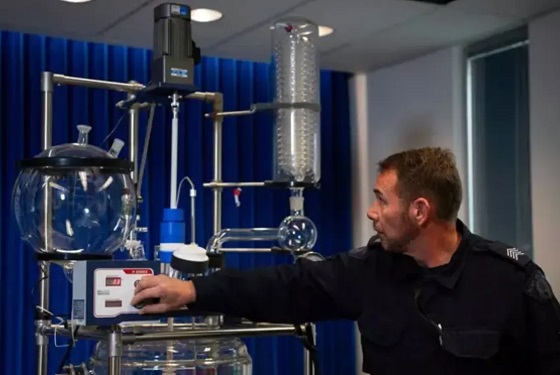
The fallout is a grim roll call of major investigations that collapsed before trial in British Columbia, Alberta, Ontario, and Quebec: Project E-Pirate, E-Nationalize, Syndicato, Cobra, Brisa, and Endgame all aborted.
Bill C-2, Ottawa’s so-called “Strong Borders Act,” promises to secure Canada’s frontiers with new surveillance powers, sweeping ministerial discretion, and higher penalties. But as veteran Canadian investigators know, the bill misses the point. It is an omnibus solution that expands the state’s reach online, while leaving untouched the very legal choke points that have made Canada a permissive financial platform and fentanyl laboratory for cartels, Triads, and state-linked terror networks.
For more than a decade, Canadian and U.S. enforcement leaders have pointed to the same failures. Police are confronting transnational fentanyl labs, a flood of Chinese chemical precursors, Hezbollah-linked laundering, and Mexican cartels setting up on Canadian soil.
Yet they are forced to fight these threats with laws “never designed for today’s criminal landscape,” as Canadian Chiefs of Police president Thomas Carrique recently warned.
Former RCMP investigator Calvin Chrustie testified before British Columbia’s Cullen Commission that, due to judicial blockages arising from Charter of Rights rulings, by 2015 it had become effectively impossible to obtain wiretaps on Sinaloa Cartel figures in Vancouver.
This year, RCMP Assistant Commissioner David Teboul said a proliferation of “commercial-grade chemistry” fentanyl labs in British Columbia — like the sophisticated factory dismantled last year in Falkland, north of Lake Okanagan, where Mexican cartels have quietly taken over domestic biker gang networks — underlined the urgent need for legislative reform.
Canada wasn’t always so overwhelmed by lethal foreign gangs. What happened? Overly permissive immigration rules and porous borders explain part of the story, but the deeper problem lies in the laws that have steadily eroded enforcement power since the early 1990s.
Instead of enabling prosecutions against transnational traffickers of humans, narcotics, and weapons, unintended consequences from misguided jurisprudence surrounding Canada’s Charter of Rights now ensure these cases almost always collapse, or are simply avoided by the Crown.
Two Supreme Court rulings — Stinchcombe and Jordan — have gutted the capacity to prosecute complex crime. Stinchcombe requires exhaustive disclosure of sensitive intelligence, often impossible in Five Eyes investigations that depend on close cooperation between Canada and the United States.
Jordan imposes strict trial ceilings that tick down while Stinchcombe disclosure battles drag on. Criminal lawyers know these two rulings function as trump cards stacked in favor of their clients.
The fallout is a grim roll call of major investigations that collapsed before trial in British Columbia, Alberta, Ontario, and Quebec: Project E-Pirate, E-Nationalize, Syndicato, Cobra, Brisa, and Endgame all aborted. Project Collecteur — a landmark probe linking Hezbollah and foreign terror-financing networks across Canadian cities to transnational drug money laundering, built on U.S. and Australian intelligence — barely made it to court, despite its far-reaching implications.
It was crippled by RCMP corruption and by underfunded, risk-averse agencies that abandoned Canadian leads painstakingly developed by Five Eyes partners.
How bad was it?
Farzam Mehdizadeh, a major Iranian money launderer and suspected weapons proliferation actor who ran a Toronto currency exchange while shuttling bags of drug cash between Toronto and Montreal, escaped back to Iran just as the RCMP was poised to arrest him on money-laundering charges. The beneficiary of a leaky national police force, evidently.
A senior U.S. enforcement source told The Bureau that during Project Collecteur, the RCMP stumbled onto an even bigger Chinese money launderer while probing Iranian networks, but the agency ignored the file — reportedly unable to shift its original investigation focus onto new enterprise targets.
These kinds of policing failures and decisions are part of the reason President Donald Trump has said senior U.S. investigators told him that Canada lacks the resources and capacity to confront fentanyl trafficking gangs.
In Washington, there is frustration — and at times a lack of understanding — that Stinchcombe either bars or effectively scares the Mounties out of cooperating with U.S. agencies or sharing intelligence.
Derek Maltz, former DEA chief under President Trump, pointed to the Falkland fentanyl super-lab case — part of a U.S.-led probe into Chinese precursor suppliers — as the latest example of “historical issues with the RCMP not sharing properly,” calling it a “major disaster that happened on that big lab in British Columbia.”
“It goes down to the basic information sharing, the antiquated laws,” Maltz said. After meeting with current Canadian police leadership, he concluded: “They’re so far behind and the laws are so antiquated and so archaic.”
The cost is staggering. Officers walk away from enterprise files, knowing they cannot meet disclosure or trial deadlines. Prosecutors refuse to take high-risk cases. U.S. agencies stop sharing intelligence that could be exposed in open court. Canada defaults to “low-hanging fruit” prosecutions while the upper echelons of global networks operate with near impunity.
Meanwhile, at the border, permissive Non-Resident Importer rules allow foreign entities to move chemical precursors through Canadian ports under layers of corporate opacity. Chinese logistics hubs repackage bulk fentanyl shipments bound for Vancouver, obscuring Canada’s visibility into their true origin. Once in Canada, packages can be collected by foreign nationals who further conceal their identities. To visualize the scheme, think of an “end-to-end encryption” app — Chinese trafficking networks enjoy the same kind of seamless concealment when shipping narcotics into Canada.
At the same time, Vancouver’s port — stripped of federal police under Jean Chrétien’s Liberal government — has container inspection rates below one percent, according to a British Columbia study.
It doesn’t seem that Bill C-2 will do anything to address these core vulnerabilities. It gives Ottawa broad powers to expand online surveillance, which may help with the drug networks that now brazenly advertise street sales on social platforms. But it would do so by subjecting all Canadians to invasive cyber surveillance. The bill does not target the transnational criminals who are already easy to identify and well known to law enforcement. These networks continue to operate openly in Canada, confident that the Charter shields them from real prosecution.
Meanwhile, experts warn that parts of C-2 resemble Ottawa’s wish list of new powers tossed into a grab bag. The effect is the opposite of inspiring public confidence or addressing the real enforcement crisis. As written, Bill C-2 could do more harm than good. Mark Carney’s government should shelve it and start again with the reforms Canada actually needs.
The Bureau is a reader-supported publication.
To receive new posts and support my work, consider becoming a free or paid subscriber.
-

 Energy23 hours ago
Energy23 hours agoOttawa must eliminate harmful regulations to spur private investment in pipelines
-
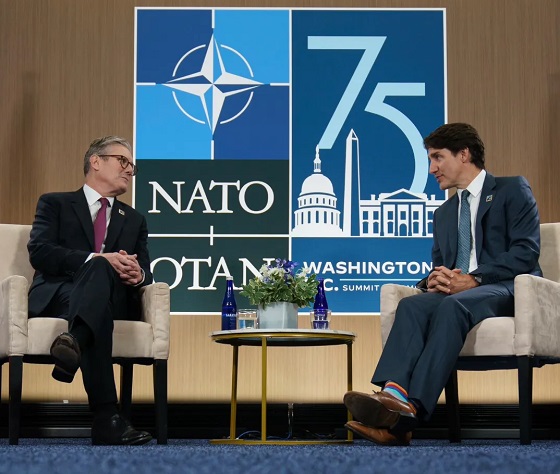
 espionage1 day ago
espionage1 day agoStarmer Faces Questions Over Suppressed China Spy Case, Echoing Trudeau’s Beijing Scandals
-

 Business1 day ago
Business1 day agoLabour disputes loom large over Canadian economy
-

 Alberta2 days ago
Alberta2 days agoJason Kenney’s Separatist Panic Misses the Point
-

 Energy17 hours ago
Energy17 hours agoBC NDP Premier Opposing a New Oil Pipeline to Tidewater
-

 Business1 day ago
Business1 day agoDaily Caller EXCLUSIVE: Chinese Gov’t-Tied Network Training Illegal Immigrants To Drive Big Rigs In US
-
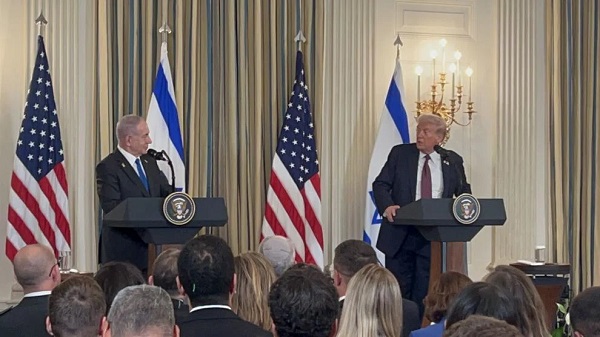
 International17 hours ago
International17 hours agoNegotiations continue in Israel-Hamas peace deal
-

 Automotive2 days ago
Automotive2 days agoBig Auto Wants Your Data. Trump and Congress Aren’t Having It.



